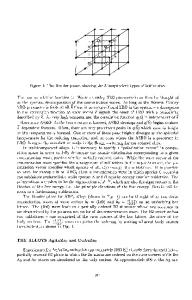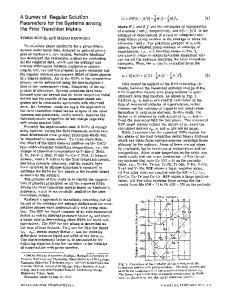First Principles Calculations of Helium Solution Energies in BCC Transition Metals
- PDF / 341,368 Bytes
- 6 Pages / 612 x 792 pts (letter) Page_size
- 97 Downloads / 295 Views
0981-JJ05-04
First Principles Calculations of Helium Solution Energies in BCC Transition Metals François Willaime and Chu Chun Fu Service de Recherches de Métallurgie Physique, CEA/Saclay, Gif-sur-Yvette, 91191, France
ABSTRACT Density functional theory calculations of the solution energies of helium in substitutional, tetrahedral and octahedral sites have been performed for all BCC transition metals: V, Nb, Ta, Cr, Mo, W and Fe. The effects of exchange correlation functional and of pseudopotential have been investigated in Fe; they are relatively small. The solution energies are found to be weakly dependent on the element for the substitutional site whereas for the interstitial sites they are much smaller in group V than in group VI and they decrease from 3d to 4d and 5d metals. As a result an inversion is observed from V, Nb and Ta - which tend to favor the interstitial site - to Mo and W, which favor the substitutional one, with an intermediate behavior for Cr and Fe. Finally, the results indicate that the tetrahedral site is always energetically more favorable than the octahedral one by 0.2 to 0.3 eV.
INTRODUCTION Helium is produced in neutron-irradiated metals by (n,α) transmutation reactions and because of its very low solubility in metals it plays a very important and specific role in microstructural evolution and mechanical properties degradation. The study of helium in metals is one of the pioneer applications of atomistic simulations in materials science, with e.g. the prediction that interstitial helium atoms tend to cluster with each other – the so-called selftrapping effect – producing vacancies and nearby self-interstitial defects [1]. The crucial parameters governing the behavior of helium in metals are the energies of helium atoms at various sites in the perfect and imperfect lattices, since these energies determine the solubility, the paths of the migration, the trapping to defects, the early stages of cluster formation and the nucleation and growth of bubbles [2]. To our knowledge, all the simulations based on empirical potentials but one [3] use for the metal-helium interaction potentials proposed by Johnson and Wilson fitted to Hartree-Fock calculations [4]. The first applications based on EAM potentials concerned FCC metals, and attention was paid only recently to BCC metals, with calculations performed in iron [5]. The latter predicted that the solution energy of helium in iron is larger by more than 2 eV in interstitial sites than in substitution and that the preferential interstitial site is octahedral rather than tetrahedral. Recent DFT-GGA calculations showed that the substitutional and interstitial solution energies are similar (within a few tenth of an eV) and that the tetrahedral site is energetically more favorable than the octahedral one by ~0.2 eV [6, 7]. It was proposed that the discrepancy between DFT and empirical potentials on the relative stability between octahedral and tetrahedral insertion sites was due to magnetic effects, which are not taken into account in standard empir
Data Loading...











